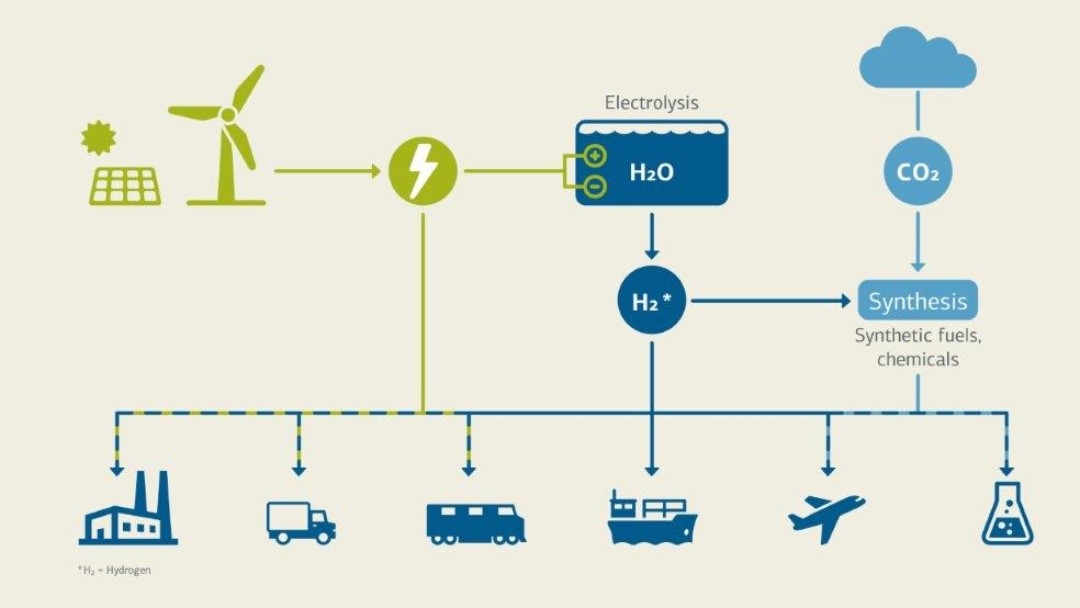Green hydrogen is produced with electrical energy from renewable sources, usually photovoltaic or wind energy. The conversion of electricity from renewable sources into gaseous or liquid energy carriers is known as green hydrogen, or power-to-X (PtX). Grey hydrogen, on the other hand, is produced from fossil fuels. The carbon dioxide produced in the process is released into the atmos-phere and intensifies the global greenhouse effect. The production of one tonne of grey hydrogen generates more than ten tonnes of CO2.
Green hydrogen can be used in many ways: as a climate-friendly energy carrier for trucks, for the production of ammonia for fertilisers, for the sustainable production of steel or cement, or even as so-called sustainable aviation fuels. PtX technology therefore not only contributes to decarbonising aviation, shipping and heavy-duty transport and other industrial sectors that cannot be electrified or can only be electrified with difficulty. PtX can also be used to store surplus electricity from wind or solar power in the long term. Green hydrogen can then be converted back into electricity to bridge longer phases of low solar radiation or a wind lull.
Hydrogen is produced by electrolysis. In this process, water is broken down into hydrogen (H2) and oxygen (O2) with the help of electricity. In the "electrolyser" there are two electrodes to which a voltage is applied. Between them is a liquid or membrane - a so-called electrolyte. Oxygen is produced at the anode and hydrogen at the cathode. If electricity from renewable energy is used for electrolysis, it is called green hydrogen. Production by electrolysis is not new. What is new, however, is the combination with renewable energies, as well as the required scale for a substantial contribution to global decarbonisation.

Climate neutrality by 2045 - Germany cannot achieve this goal without the use of PtX technologies. But currently, electrolytically produced hydrogen accounts for only about 4 percent of global hydro-gen production. Climate neutrality means only emitting as many greenhouse gases as can be re-captured. In concrete terms, this requires a reduction of greenhouse gases by 95 percent (as of 2021). The remaining, hardly avoidable CO2 emissions could be bound by reforestation or stored underground.